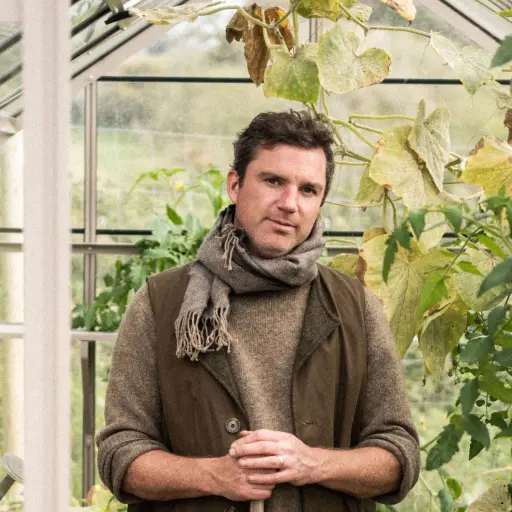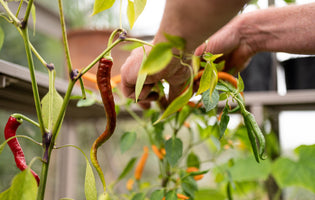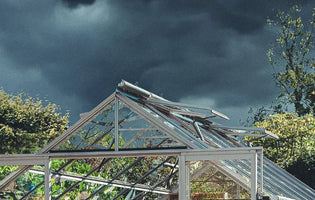It’s interesting how every gardening year seems so different from the last. Despite so many controls, the variables always have the upper hand.
Even if I grow the same varieties of vegetables and fruit, in similar places (taking crop rotation into account, obviously), I can never be sure everything will pan out as it has before. There’s a certain unpredictability in gardening, a element of jeopardy. It’s fraught with suspense and anticipation; reward yes, but on occasion, disappointment. Gardening is a mixed bag of emotions, which keeps us guessing, day-to-day, year-to-year.
It doesn’t matter how many books you’ve read, or how much experience you’ve managed to chalk up over time, Mother Nature will always play a trick card now and again. A spell of drought, a hard frost, a strong easterly that runs up through the valley and straight into my late summer runner beans. Prizing their canes from the ground and sending heavy clumps of the plant crashing down onto the garden path. Who could predict this, who knew? There wasn’t a strong easterly like that last year!
The weather is definitely one of these variables. It can be a hindrance when it wants to be! but in the same breath, it can be a big, unexpected help, and when you really need it. This September, for example, has been particularly mild, and down here in east Devon, there’s been sunshine, and more than usual. This has meant the last of my tomatoes have, rather surprisingly, ripened up beautifully. So what was once green and firm and destined for the preserving pan, are now red, soft and splitting in places, and demand little more than a healthy trickle of good olive oil and a pinch or two of sea salt.
The same could be said of the carrots I planted back in the spring. I thought their growth had peaked, underwhelming I’d add, in July, but this extended period of warm weather, with a spat of rain here and there, has drawn out the growing season, and happily, my carrots have responded pretty positively. They’ve grown into fairly respectable (although a touch podgy) specimens, and although I won’t be entering them into the local autumn show any time soon, they’d certainly be at home on a crudités platter, or roasted, around a chicken. But even these carrots are a world away from the prize carrots I grew in my first full (lockdown) year as a rhino owning vegetable gardener. Those carrots really were in a class of their own - the real Bugs Bunny deal. I haven’t managed to replicate them, because I’m not sure what exactly influenced their perfect form, classic taper, their optimum sweetness and stereotypical crunch. Was it the virgin soil? The long, unprecedented months of sunshine? Was it my beginner’s enthusiasm that stood them in good stead? Or was it something else entirely? I’m not sure I’ll ever know, and in some ways, I think it’s better not too. Gardening is all about surprises, that’s what makes it so interesting and enjoyable. If I knew my carrots were going to be showstoppers every year, it would take all the fun out of it. Gardening is about working with nature, not trying to avoid or snub it. We are, ultimately, simply onlookers, by standers, who get to witness the natural cycle of the seasons through the food we grow. We cannot fight nature or try to strong-arm it; we can only respect it and enjoy the show, no matter how it ends.
Grilled carrots with sumac, chilli, lemon and bashed herby haricot beans
This autumn I thought i'd share a recipe from nay new cookbook ‘Outside’ Because cooking outside isn’t just something to do in the summer, there no reason you can’t cook make the most of it in the autumn, and even the winter. So with carrots on my mind, here’s a great way to prepare and serve them.
I’ve always liked roasting carrots in a hot oven, caramelizing their sugary outsides and softening their middles. The high, dry heat intensifies their flavor and enhances their subtleties. It used to be my favorite way to cook them, until I cooked them like this, over a searing, smoky fire. I’ve actually discovered, through trial and error, that the carrots benefit from being boiled for a few minutes before you sit them down on the bars of the grill. It’s not absolutely essential, but it’s definitely worth the effort. The beans transform these sumac- and chilli-spiced roots into an entire meal, although the carrots alone would make an amazingly delicious accompaniment to anything and everything.
Ingredients
2 tablespoons extra-virgin olive oil, plus extra to serve
1 onion, roughly chopped
2 garlic cloves, sliced
1x 400g (14oz) can of haricot beans, drained and rinsed
A small handful of at-leaf parsley, leaves picked and chopped
Finely grated zest and juice of 1 lemon
A bunch of long, thin carrots, trimmed
A good pinch of chilli flakes
2 teaspoons sumac
2 teaspoons coriander seeds,
Coarsely crushed
Flaky sea salt and freshly ground black pepper
Get a hot fire going. Set a heavy-based saucepan over the heat and add 1 tablespoon of the extra-virgin olive oil. When it’s hot, add the onion and the garlic and a little salt and pepper. Sizzle for 4–6 minutes, stirring regularly, then add the drained beans and enough water to just cover them. Simmer the beans for 8–10 minutes, and as they’re cooking crush them with a fork or a wooden spoon. Sprinkle in the parsley and season with plenty of salt and pepper and the lemon juice to taste (reserve the remaining juice). Keep the bashed beans warm.
Meanwhile, bring a pan of salted water to a boil and add the carrots. Cook them for 6–8 minutes or until they’re just tender. Drain the carrots, return them to the pan and toss them in the remaining extra-virgin olive oil, as well as the lemon zest, chilli flakes and sumac. Turn the carrots through the spices and zest, then lay them down on the grill over a hot part of the fire. Cook the carrots, turning regularly, until they begin to blister and char in places.
Divide the warm, bashed beans between two plates or bowls. Arrange the grilled carrots alongside. Sprinkle over the remaining lemon juice and trickle generously with extra-virgin olive oil. Season with flaky salt and pepper, then serve.








